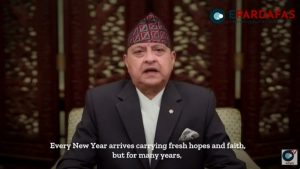
Nepal’s Constitution Day: Time for Reflection and Reforms
Nepal is observing Constitution Day with much fanfare, marking nine years since the promulgation of the current constitution by the second Constituent Assembly. As the country approaches the tenth anniversary of its national charter, it’s an opportune moment for a critical review of its implementation. The 2015 constitution, brought forth after decades of struggle, overhauled the centuries-old unitary system, replacing it with a federal structure that introduced three levels of government—federal, provincial, and local. Since then, Nepal has successfully held two rounds of elections across all three tiers.
Salient Features of Nepal’s Constitution
One of the most notable aspects of Nepal’s 2015 constitution is that it vests sovereign power in the people. It also acknowledges the struggles and sacrifices made to establish the republic, lays out national goals, and enshrines fundamental rights for citizens. The constitution sets a framework for how the three layers of government—federal, provincial, and local—should function through coexistence, cooperation, and collaboration.
When evaluating the effectiveness of the constitution, it’s important to focus on governance. Nepal has made strides in this area, with periodic elections being a critical marker of success. The country has held elections at all levels of government twice since 2015, supporting the implementation of the federal system. Furthermore, the inclusion of women and marginalized communities—such as Madhesis, Muslims, and indigenous nationalities—in governance through proportional representation reflects Nepal’s commitment to diversity and inclusivity.
However, the constitution’s long list of fundamental rights remains largely aspirational. The challenge now is to turn these rights into reality through effective laws and their implementation.
Time for Review and Reflection
While it’s often said that it takes time for new systems to stabilize, nine years is long enough to take stock. Nepal’s political instability and frequent changes in government are significant weaknesses. Since the promulgation of the constitution, the country has seen numerous coalition governments and shifting political alliances at the federal level, which have had a ripple effect on provincial administrations. Many have questioned whether the current electoral system is to blame for the hung parliaments and subsequent political instability. If so, this issue requires serious attention, as the costs of unstable governance are substantial.
The constitution lays out the aspiration for sustainable peace, good governance, and prosperity. Yet corruption, particularly at the local level, has been a growing problem. The recent report from the Commission for Investigation of Abuse of Authority (CIAA) highlighted how corruption is entrenched in many areas. Non-cooperation between elected representatives and government employees, coupled with financial irregularities, has slowed down development projects and violated citizens’ rights. The large portion of the national budget allocated to local governments for development is often mismanaged, undermining both the constitution and national development goals.
Addressing Legal Gaps
Another key challenge to the effective implementation of federalism has been the slow pace of lawmaking. Delays in passing crucial laws related to police administration, civil service, and education have created uncertainty at the provincial and local levels. Many of these laws are outdated and ill-suited to the federal system. The absence of clear laws has hindered the smooth functioning of subnational governments, which often feel unsupported by the federal administration.
The federal government needs to prioritize passing these laws to enable provincial and local governments to fulfill their constitutional roles effectively. As Nepal celebrates its local levels as the “closest government to the people,” it must also ensure that these governments are adequately staffed and resourced.
Strengthening Subnational Governments
For federalism to thrive, subnational governments—provinces and municipalities—must be empowered. However, these lower levels of government often face challenges, including inadequate financial resources and encroachment by the federal government on their jurisdiction. Dr. Khimlal Devkota, a federalism expert, notes that for local and provincial governments to succeed, revenue generation powers must be decentralized, and fiscal resources increased.
Dr. Devkota advocates for better coordination among federal units and the creation of a scientific approach to resource allocation. He argues that a robust system of fiscal federalism is essential for the success of Nepal’s federal structure.
The delay in making laws to suit the federal setup has been compounded by political infighting and disruptions in parliament. The smooth functioning of the three tiers of government is crucial to empowering citizens, speeding up development, and realizing Nepal’s national goals.
Calls for Constitutional Amendment
As Nepal celebrates Constitution Day this year, discussions around amending the constitution have surfaced, particularly after the formation of the coalition government between the Nepali Congress and the Communist Party of Nepal (Unified Marxist Leninist). Although it’s unclear what specific changes are being proposed, much of the conversation has centered on the electoral system.
Any amendment to the constitution should be the result of a rigorous process, involving consensus among political parties and input from legal and constitutional experts. Changes should be based on thorough studies of areas where the constitution has failed to deliver results or hindered progress.
It’s also important to ask whether the necessary changes are limited to the electoral system or if reforms are also needed in the judiciary and executive branches. A comprehensive review of how fundamental rights are being enforced is also critical.
A Path Forward
As Nepal looks to the future, it’s clear that empowering subnational governments is key to the successful implementation of federalism. Protecting the achievements made so far, while ensuring the rights of citizens—especially in terms of inclusion, proportional representation, and justice—should be the focus of any constitutional amendment. By making the system more functional and effective, Nepal can ensure that the aspirations of “Prosperous Nepal and Happy Nepali” become a reality.
With nine years behind it, Nepal’s constitution has undoubtedly set the country on a new path. But as the country celebrates Constitution Day, the call for reflection, review, and reform is louder than ever.














Comments